Backyard Vegetable Garden Layout Plans
- January 22, 2024
- 0 comment
Explore effective backyard vegetable garden layout plans to maximize space and yield. Perfect for any home gardener looking to thrive. Imagine your backyard transformed into an abundant garden, brimming with ripe tomatoes, crisp cucumbers, and aromatic herbs. The satisfaction of harvesting your produce is not just a fulfilling experience, but also a step towards a sustainable lifestyle. The success of your vegetable garden hinges on more than just what you plant; it depends significantly on how you plan and design your garden layout.
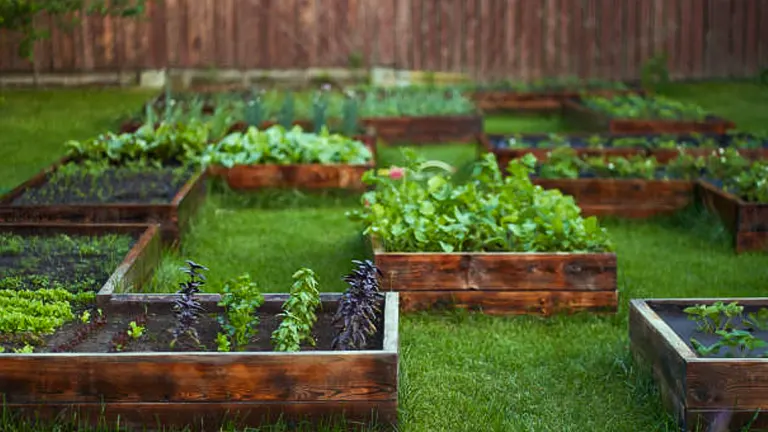
We will explore the essentials of backyard vegetable garden layout plans. Whether you’re working with a spacious area or a compact green space, a well-planned layout is key to maximizing yield and efficiently using every inch of soil. We’ll guide you through maximizing space, understanding the importance of sunlight, and choosing the right layout for your garden’s specific needs. Discover how to start and what combinations work best to transform your backyard into a thriving haven for fresh produce.
List of Backyard Vegetable Garden Layout Plans
- Understanding Your Space and Needs
- Different Types of Backyard Vegetable Garden Layout Plans
- Protecting Your Garden
- Planning for the Seasons
- Sustainable Gardening Practices
- Conclusion
- FAQs
Understanding Your Space and Needs

Before diving into the world of backyard gardening, it’s essential to assess your space. Consider the size of your backyard, the amount of sunlight it receives throughout the day, and the type of soil present. These factors are crucial in determining which plants will thrive in your space. Additionally, think about how your garden can coexist with other backyard activities. Is there a need for a play area for kids or pets? Finally, setting goals is important. Decide on the types of vegetables and fruits you wish to grow, taking into account your family’s preferences and the local climate. This preliminary planning sets the stage for a successful and fulfilling gardening experience.
Different Types of Backyard Vegetable Garden Layout Plans
1. Backyard Garden Traditional Row Layout
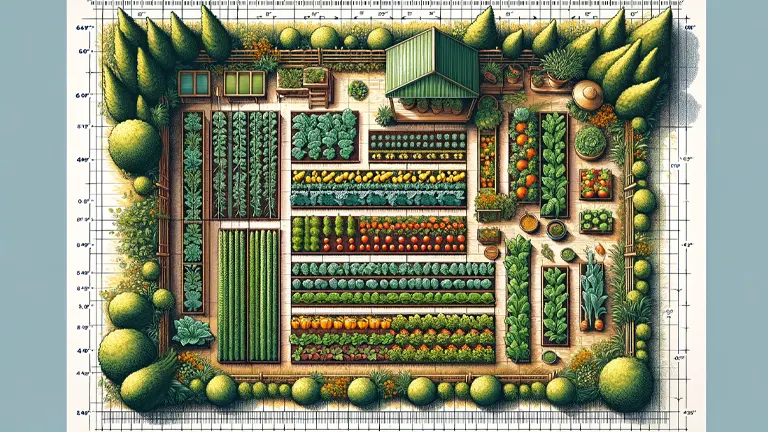
This classic layout is perfect for larger spaces, like a 60’ 11” x 54’ 11” garden. It allows for efficient use of space, easy access for maintenance, and effective crop rotation. To succeed with this layout, pay attention to plant spacing and regularly maintain your garden to prevent overcrowding and disease.
Tips on How to Build Backyard Garden Traditional Row:
- Designing the Layout: Start by drafting a detailed plan of your garden. Consider the orientation of your rows; ideally, they should run north to south to maximize sunlight exposure. Ensure there is enough space between rows for easy access – this space will depend on the types of vegetables you plan to grow and your equipment needs.
- Soil Preparation: Proper soil preparation is the foundation of a good garden. Begin by removing weeds, rocks, and other debris. Conduct a soil test to determine its pH and nutrient content. Based on the results, enrich your soil with organic matter, compost, or fertilizers to ensure it has the nutrients necessary for vegetable growth.
- Row Formation and Spacing: The key to a traditional row layout is proper spacing. As a general rule, leave about 18 to 36 inches between rows, depending on the vegetable type. Wider rows can accommodate larger plants, while closer rows are suitable for smaller ones. This spacing helps in air circulation, reduces disease spread, and allows for easier maintenance.
- Irrigation System: Efficient watering is crucial. Setting up a drip irrigation system can be highly effective. It delivers water directly to the plant roots, conserves water, and helps prevent diseases associated with overhead watering.
- Planting and Crop Rotation: Plant your seeds or seedlings according to their specific depth and spacing requirements. Practice crop rotation by changing the types of vegetables grown in each row every year. This practice helps in managing soil fertility and controlling pests and diseases.
- Maintenance and Care: Regular maintenance is vital. This includes weeding, thinning out overcrowded plants, and checking for pests and diseases. Mulching between rows can help retain moisture, suppress weeds, and regulate soil temperature.
- Seasonal Adjustments: Adapt your planting schedule to the seasons. Start with cool-season crops in early spring and transition to warm-season crops as temperatures rise. Understanding the growth cycle of each vegetable is key to a successful harvest.
By following these steps, you can effectively establish a traditional row layout in your backyard garden. This layout not only makes efficient use of larger spaces but also creates a structured environment for growing a variety of vegetables, leading to a bountiful and healthy harvest.
2. Backyard Garden Raised Bed Layout

Raised beds are an excellent solution for medium-sized gardens, offering superb control over soil quality and significantly reducing physical strain for gardeners. Ideal for a space like a 29’ 11” x 29’ 11” garden, raised beds not only ensure excellent drainage but also add a charming aesthetic to your backyard. They are particularly beneficial for areas with poor native soil or drainage issues.
Tips on How to Build a Backyard Garden Raised Bed:
- Choosing Materials: Selecting the right materials for your raised beds is crucial. Durable woods like cedar or redwood are popular choices due to their resistance to rot and pests. Alternatively, materials like bricks, stones, or composite boards can also be used. Avoid treated lumber, as it may contain chemicals harmful to plants and soil.
- Determining the Size and Shape: The dimensions of your raised beds should be tailored to your space and needs. A standard height is about 12-18 inches, but they can be higher if bending or kneeling is a concern. The width should allow easy reach to the center from any side, generally not more than 4 feet across. The length can be as long as your space allows.
- Selecting the Location: Choose a location that receives adequate sunlight (minimum 6 hours per day). If possible, orient the beds north to south to maximize sun exposure. Ensure the location has good drainage and is not prone to waterlogging.
- Preparing the Site: Clear the site of any weeds or grass. If your garden has issues with burrowing pests, consider laying hardware cloth at the bottom of the beds. Level the ground where your beds will sit to prevent water pooling in one area.
- Filling Your Beds: Fill the beds with a mix of topsoil, compost, and other organic matter. This blend will provide a nutrient-rich, well-draining environment for your plants. Avoid using soil from your garden, as it may contain weed seeds and pests.
- Planning for Irrigation: Raised beds dry out faster than in-ground gardens, so plan your watering strategy. Drip irrigation is efficient and conserves water, but if that’s not feasible, ensure you can easily access the beds with a hose or watering can.
- Companion Planting and Plant Layout: Take advantage of the structure of raised beds to organize your plants effectively. Companion planting can be highly beneficial; for example, planting basil near tomatoes can help repel pests. Consider plant heights, sunlight needs, and root depths when planning your layout.
By following these steps, you can build and maintain a functional and beautiful raised bed garden in your backyard. Raised beds offer the flexibility to grow a variety of plants, from vegetables and herbs to flowers, and can be customized to fit the aesthetic of any garden.
3. Small Space and Urban Backyard Garden Plans
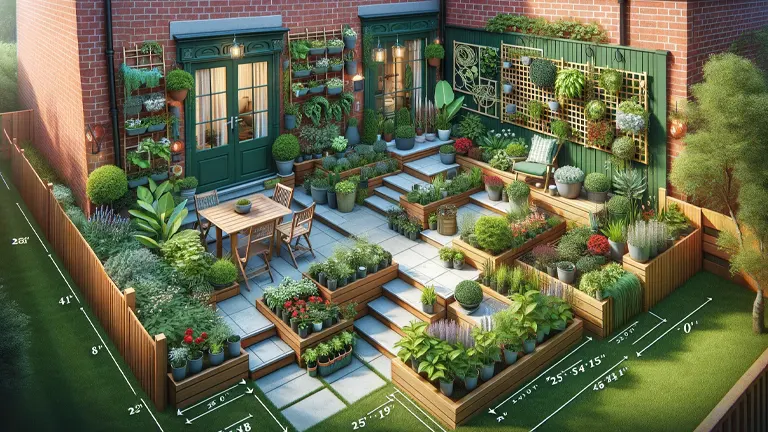
In urban settings or smaller backyards, where space is at a premium, innovative approaches like vertical gardening and container gardening become invaluable. These methods are especially beneficial in areas measuring around 25’ 0” x 15’ 11”, where traditional gardening might be challenging due to space constraints or poor soil conditions, such as heavy or clay soils. Phased planning can also be a smart approach, allowing for gradual expansion and adaptation as you gain more experience and confidence in your gardening skills.
Tips on How to Build a Small Space and Urban Backyard Gardens:
- Choosing Containers and Pots: Select a variety of containers in different sizes and depths to accommodate different plant types. Ensure they have adequate drainage holes. Materials can range from traditional terracotta to plastic, metal, or even recycled materials. For urban areas, consider lightweight containers if they need to be moved or are on balconies.
- Vertical Gardening Strategies: Utilize vertical space by installing wall-mounted planters, trellises, or hanging baskets. This approach not only saves ground space but also adds an aesthetic dimension to your garden. Vertical structures can be used for climbing plants like tomatoes, peas, and certain types of beans.
- Soil and Fertilization: In container gardening, choose high-quality potting mix designed for container use. This mix typically provides better drainage and nutrient content compared to regular garden soil. Regular fertilization is also more crucial in container gardening since the soil volume is limited.
- Watering Considerations: Containers and vertical gardens require more frequent watering as they dry out faster than in-ground beds. Consider self-watering containers or set up a drip irrigation system for convenience and efficiency. Be mindful of overwatering, as it can lead to root rot.
- Sunlight and Placement: Most vegetables require 6 to 8 hours of sunlight daily. Position your containers or vertical structures in areas that receive ample sunlight. If possible, use movable containers to take advantage of changing sunlight patterns throughout the day.
- Plant Selection: Choose plants that are well-suited to container life. Dwarf or bush varieties of vegetables, herbs, and even some fruit trees thrive in containers. Leafy greens, cherry tomatoes, and herbs like basil and mint are excellent choices for smaller spaces.
- Phase Planning: Start small with a few containers or a single vertical structure and gradually expand. This approach allows you to learn and adjust your strategies based on the specific conditions of your space and the performance of your plants.
By implementing these strategies, you can transform a small or urban space into a lush, productive garden. This type of gardening not only maximizes limited space but also brings the joy of growing your own food to the urban environment.
Protecting Your Garden
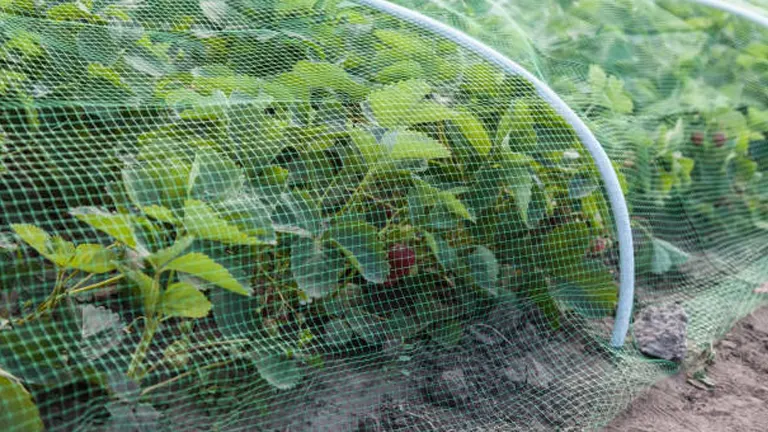
Ensuring your garden is protected from external disturbances like pets, children, and general backyard activities is essential for its health and productivity. Implementing physical barriers and involving family members in garden care are effective strategies to achieve this. Here are some strategies for Garden Protection:
- Physical Barriers: Erecting physical barriers is one of the most effective ways to protect your garden. Options include wooden fences, which provide a sturdy barrier against larger animals and can be customized to fit the aesthetic of your garden. Decorative stones can create a physical boundary that doubles as a landscaping feature, deterring foot traffic through your garden beds. Low hedges can also serve as a natural barrier, adding greenery while protecting your plants.
- Garden Edging: Garden edging can be both practical and decorative, serving to delineate the garden space clearly. Materials like metal, brick, or stone edging not only keep lawn grasses from encroaching into your garden beds but also provide a clear visual boundary for children and pets, helping them understand where they can and cannot play.
- Raised Beds: Raised garden beds offer an effective way to protect your plants. Being elevated, they are harder for pets to access and less likely to be trampled by children. Raised beds also offer ergonomic benefits for gardeners and can be designed to complement your garden’s aesthetic.
- Netting and Cloches: For smaller plants or specific areas of your garden, netting or cloches can be useful. Bird netting can protect fruiting plants from birds and squirrels, while cloches can guard individual plants from pets or harsh weather conditions.
- Pathways and Clear Boundaries: Designating clear pathways around or through your garden can help direct foot traffic, reducing the risk of plants being stepped on. Pathways can be created using gravel, stepping stones, or mulch and can enhance the overall look of your garden.
- Family Involvement and Education: Involving family members, particularly children, in garden care can be a valuable educational experience. Teach them about the importance of plants and assign them specific, age-appropriate gardening tasks. This not only helps protect the garden by fostering respect for the space but also cultivates a lifelong love for gardening.
- Motion-Activated Sprinklers: For added protection, especially from neighborhood pets or wildlife, consider installing motion-activated sprinklers. These sprinklers activate when they detect movement, gently spraying water to deter animals from entering your garden area.
By implementing these strategies, you can effectively protect your garden from various external factors while maintaining its aesthetic appeal and functionality. This holistic approach to garden protection ensures that your garden remains a thriving and enjoyable space for everyone in the family.
Planning for the Seasons
Effective seasonal planning is crucial in backyard vegetable gardening to ensure a continuous and productive harvest throughout the year. Understanding the seasonal needs of your garden allows you to make the most of each growing period, adapting to changes in weather and plant requirements.
- Spring Planning: Spring is a time for planting cool-weather crops such as lettuce, spinach, peas, and broccoli. These plants can tolerate the cooler temperatures and even light frosts. Begin with soil preparation as soon as it’s workable, enriching it with compost or other organic matter. Starting seeds indoors can give you a head start on the growing season, especially in regions with shorter warm periods.
- Summer Gardening: As temperatures rise, transition to warm-season crops like tomatoes, peppers, cucumbers, and beans. These plants thrive in the heat and require consistent watering and mulching to maintain soil moisture and temperature. It’s also important to implement pest control measures and regular weeding during this peak growing season.
- Fall Preparations: The arrival of cooler fall weather is ideal for a second planting of many spring crops, along with root vegetables like carrots and beets. It’s also the time to start preparing your garden for winter. Gradually clear out spent plants, add mulch to protect soil, and plant cover crops if desired, to enhance soil quality for the next season.
- Winter Strategies: In milder climates, winter can still be a productive time with the planting of cold-hardy vegetables like kale and Brussels sprouts. In colder regions, use this time to plan for the next year. Protective structures like cold frames or greenhouses can extend your growing season, allowing for fresh produce even in the colder months.
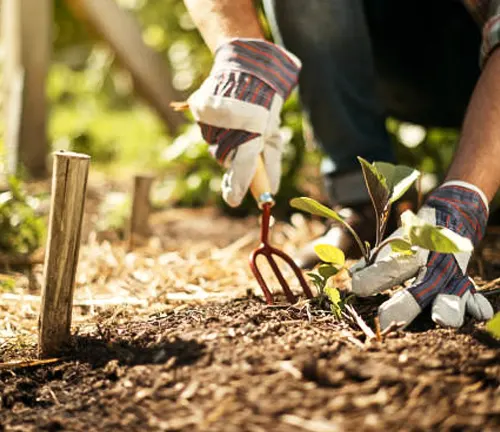
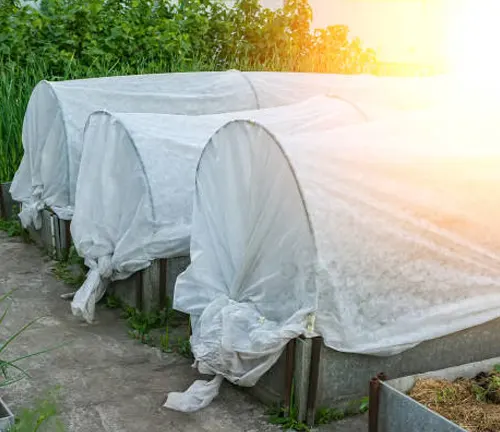
Remember, each garden is unique due to its microclimate and geographical location. Keep a garden journal to track what works and what doesn’t throughout the year, and adjust your plans accordingly. By aligning your gardening activities with the rhythms of the seasons, you can create a sustainable and fruitful garden year-round.
Sustainable Gardening Practices
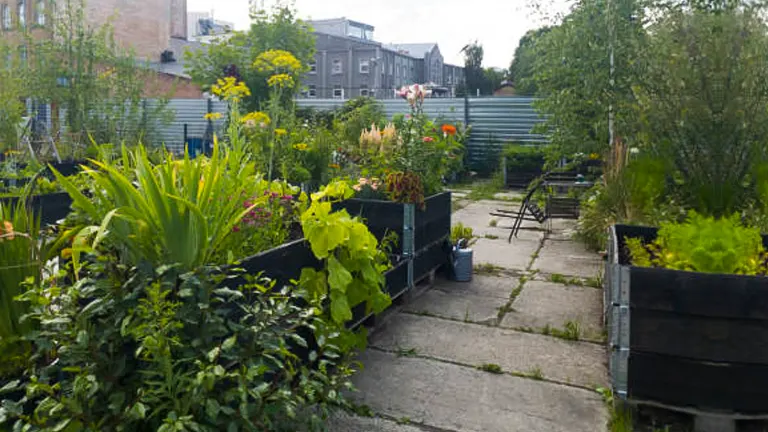
Embracing sustainable gardening practices is not only beneficial for the environment but also enhances the health and productivity of your garden. Sustainable gardening involves a series of mindful practices aimed at reducing environmental impact and promoting a natural, healthy ecosystem in your backyard.
- Organic Gardening: This is a cornerstone of sustainable practices. It involves avoiding synthetic fertilizers and pesticides, instead opting for organic alternatives. Using compost, natural manure, or organic fertilizers enriches the soil with nutrients without harming the local flora and fauna. For pest control, organic gardeners often rely on beneficial insects like ladybugs or use natural deterrents like neem oil and soap sprays.
- Water Conservation: Efficient water use is crucial in sustainable gardening. Techniques such as rainwater harvesting, using rain barrels or cisterns, can significantly reduce dependence on municipal water. Drip irrigation systems deliver water directly to the roots of plants, minimizing wastage and evaporation. Additionally, mulching around plants helps retain soil moisture, reducing the need for frequent watering.
- Composting and Waste Reduction: Composting is an effective way to recycle kitchen and garden waste, turning it into nutrient-rich soil amendment. This not only reduces waste sent to landfills but also improves soil health, leading to robust plant growth. Using locally sourced materials and plants in your garden can also reduce the carbon footprint associated with transporting gardening supplies.
- Promoting Biodiversity: Encouraging a diverse range of plants and wildlife in your garden contributes to a balanced ecosystem. Planting native species supports local wildlife, including pollinators like bees and butterflies. Creating habitats such as birdhouses, bee hotels, or small ponds can attract and support various beneficial creatures.
- Natural Soil Enrichment: Instead of chemical soil enhancers, sustainable gardening focuses on natural methods to improve soil fertility. Crop rotation, green manuring, and planting nitrogen-fixing plants are ways to maintain soil health and fertility over time.
By adopting these sustainable gardening practices, you contribute to an environmentally friendly approach that respects and harnesses nature’s balance. This not only results in a thriving garden but also plays a part in creating a more sustainable world.
Conclusion
Creating a backyard vegetable garden is an enriching experience that brings health, sustainability, and beauty to your home. By understanding your space, choosing the right layout, protecting your garden, planning for the seasons, and practicing sustainable methods, you can cultivate a thriving garden that complements your family’s lifestyle and the environment.
FAQs
- How do I decide which garden layout is best for my backyard?
Consider the size of your backyard, the amount of sunlight it receives, and your soil type. Traditional row layouts work well for larger spaces, while raised beds are great for medium-sized areas. For small or urban spaces, consider container or vertical gardening. - Can I mix flowers with vegetables in my garden layout?
Absolutely! Mixing flowers with vegetables can not only beautify your garden but also help with pest control and pollination. Marigolds, for instance, are great at deterring pests. - What should I consider when placing my vegetable garden in the backyard?
Look for a spot that gets plenty of sunlight (at least 6 hours a day), has good drainage, and is protected from strong winds. Also, consider accessibility for watering and maintenance. - How important is soil type in planning my vegetable garden?
Soil type is crucial as it affects water retention, nutrient availability, and root growth. Test your soil and amend it as necessary to suit the needs of the vegetables you plan to grow. - What are some effective ways to protect my garden from pets and children?
Use physical barriers like fencing or decorative edging. Raised beds can also deter pets and small children from accidentally trampling plants. Additionally, educate family members about respecting the garden space. - How can I maximize space in a small backyard for a vegetable garden?
Utilize vertical gardening with trellises or hanging planters. Choose compact or dwarf varieties of plants and consider intercropping (growing different crops together that have different growth habits and periods). - What’s the best way to arrange plants in a vegetable garden?
Group plants based on their needs – like water, sunlight, and soil type. Practice companion planting to enhance growth and deter pests. Taller plants should be placed in a way that they don’t shade shorter plants. - How often should I redesign my vegetable garden layout?
It’s good to reassess your garden layout annually. Crop rotation is important to prevent soil depletion and reduce disease and pest issues. Also, as your gardening skills grow, you might want to try different layouts or add more complex features like perennial beds or a greenhouse.
Thank you for exploring the exciting world of backyard vegetable gardening with us. Whether you’re a seasoned green thumb or just starting, we hope this guide inspires you to create a garden that brings joy, nourishment, and beauty to your home. Happy gardening!

Benjamin Brooks
Forestry AuthorGreetings! I'm Benjamin Brooks, and my journey over the past 15 years has revolved around the fascinating realms of content creation, expertise in snow clearing, and the intricate world of lumberjacking and landscaping. What began as a simple curiosity about the natural world and heavy machinery has evolved into a passionate profession where my love for crafting words intertwines seamlessly with my lumberjacking and garden skills.







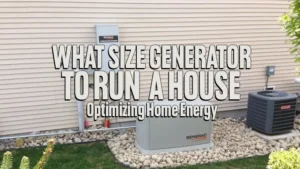
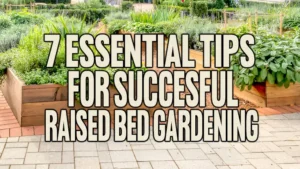
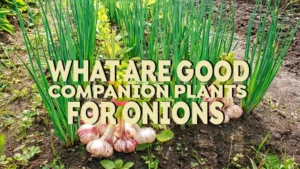



Leave your comment